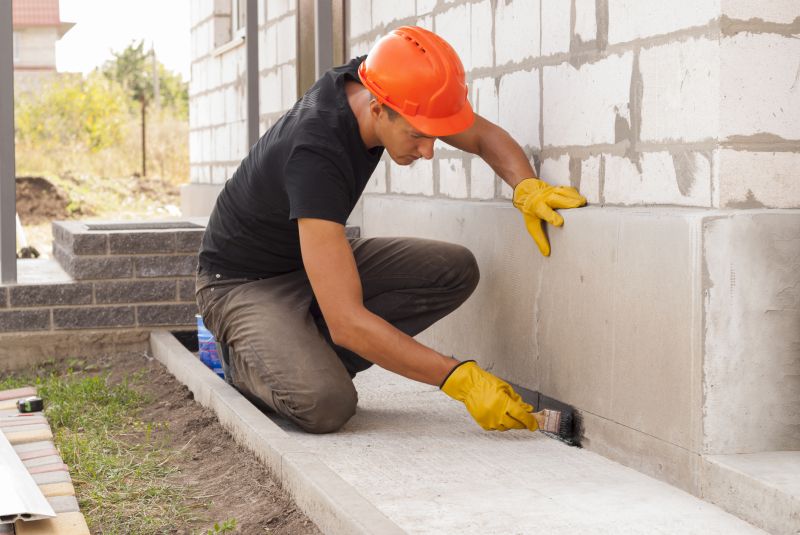Popular Foundation Stabilization Products For Long-Term Support
Select from top foundation stabilization products that help prevent future issues and maintain structural safety.
 Foundation repairs are a critical aspect of maintaining the structural integrity of a building, especially in areas prone to shifting soils or moisture fluctuations. When considering products for foundation repairs, it is essential to understand the variety of solutions available, each designed to address specific types of foundation issues such as settling, cracking, or shifting. These products are often used by professionals but are also accessible for DIY enthusiasts with proper guidance.
Foundation repairs are a critical aspect of maintaining the structural integrity of a building, especially in areas prone to shifting soils or moisture fluctuations. When considering products for foundation repairs, it is essential to understand the variety of solutions available, each designed to address specific types of foundation issues such as settling, cracking, or shifting. These products are often used by professionals but are also accessible for DIY enthusiasts with proper guidance.
Top Overall Option
Hydraulic Foundation Jack System
A hydraulic foundation jack system provides controlled lifting and stabilization of a foundation. It allows precise adjustment and can be used to lift settled sections or support sagging areas. Its versatility and ease of use make it a popular choice among professionals and DIY enthusiasts for targeted foundation stabilization tasks.
Types of Products For Foundation Repairs
Hydraulic Lifting Jacks
Used for lifting and leveling foundation sections with precision, often employed in conjunction with underpinning techniques.
Underpinning Piers
Support systems inserted beneath the foundation to stabilize and lift settling structures, available in various materials such as concrete and steel.
Helical Piles
Deep foundation support elements screwed into the ground to provide stability in shifting soils, suitable for extensive foundation issues.
Resin Injection Systems
Used to fill and seal cracks and voids within the foundation, helping to restore integrity and prevent water intrusion.
Crack Repair Compounds
Specialized sealants and fillers designed for small to moderate cracks, preventing further expansion and water ingress.
Soil Stabilization Products
Materials that improve soil bearing capacity and reduce shifting, often used before or during foundation repair.
Foundation Bolts and Anchors
Hardware used to reinforce existing structures and secure the foundation to the framing for added stability.
Concrete Patching and Repair Kits
Ready-to-use materials for repairing surface cracks and minor damages on foundation surfaces.
Waterproofing Membranes
Barrier materials applied to foundation walls to prevent water infiltration and reduce soil erosion around the base.
Vibration and Compaction Equipment
Tools used to compact soil around the foundation to improve stability and reduce future shifting.
Drainage Systems
Systems designed to redirect water away from the foundation, minimizing moisture-related issues.
Foundation Repair Braces
Structural supports that reinforce walls and prevent further cracking or bowing.
Hydraulic Push Piers
Support systems driven into the ground to lift and stabilize sinking foundations, suitable for deep soil conditions.
Popular Choices
Widely used for precise lifting and leveling of foundations, appreciated for their control and reliability.
Commonly selected for underpinning, these provide solid support beneath the foundation.
Popular for crack sealing and minor repairs, offering quick and effective solutions.
Favored for their strength and ease of installation in challenging soil conditions.
Frequently used to protect foundation walls from water damage and moisture intrusion.
Commonly applied to reinforce bowing or cracked walls for added stability.
Popular for managing water flow around the foundation to prevent future issues.
A go-to choice for sealing surface cracks and preventing water ingress.
Used to improve soil stability before or during repair projects.
Often employed to compact soil and improve foundation support.
Help in temporarily or permanently stabilizing foundation walls and structures.
Selected for deep support needs, especially in shifting or unstable soils.
Foundation repair products typically include a range of materials and tools that work together to stabilize and lift the foundation. These may involve hydraulic jacks, underpinning piers, helical piles, resin injection systems, and crack repair compounds. Proper selection and application of these products can help mitigate further damage and improve the longevity of the structure.
In Flower Mound, TX, where soil conditions can vary and moisture levels fluctuate, choosing the right foundation repair products is especially important. Local contractors often recommend specific solutions tailored to the regional geology. Whether dealing with minor cracks or significant shifting, understanding the available products can help homeowners and professionals make informed decisions to address foundation concerns effectively.
While it is advisable to consult with a foundation specialist for assessment and installation, having knowledge of the various repair products can empower property owners to ask informed questions and understand the options available. Proper maintenance and timely intervention with suitable products can contribute to preserving the property's value and safety over time.
Key Buying Considerations
- Assess the specific foundation issue to determine the appropriate product or system.
- Consider the soil conditions and how they influence the choice of repair methods.
- Evaluate the extent of damage to establish whether a DIY approach is feasible or professional intervention is recommended.
- Check the compatibility of repair products with existing foundation materials.
- Look for products with clear installation instructions and safety guidelines.
- Prioritize solutions that offer adjustable or customizable features for precise leveling.
- Review the load capacity and support specifications to ensure they meet your structural needs.
- Consider the longevity and durability of the repair materials under local climate conditions.
- Ensure that repair products are compatible with moisture management systems if water intrusion is an issue.
- Think about the ease of access and maneuverability of tools and materials in tight spaces.
- Research local building codes and regulations to ensure compliance with repair methods and materials.
- Determine whether professional installation is necessary for complex or large-scale repairs.
- Evaluate the availability of replacement parts and ongoing support from suppliers.
- Compare warranties or guarantees offered by manufacturers or contractors.
